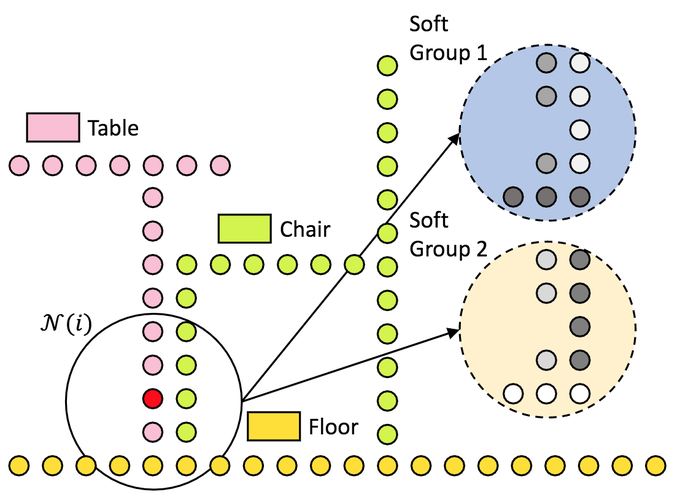SALA: Soft Assignment Local Aggregation for 3D Semantic Segmentation

SALA: Soft Assignment Local Aggregation for 3D Semantic Segmentation
Abstract
We introduce the idea of using learnable neighbor-to-grid soft assignment in grid-based aggregation functions for the task of 3D semantic segmentation. Previous methods in literature operate on a predefined geometric grid such as local volume partitions or irregular kernel points. These methods use geometric functions to assign local neighbors to their corresponding grid. Such geometric heuristics are potentially sub-optimal for the end task of semantic segmentation. Furthermore, they are applied uniformly throughout the depth of the network. A more general alternative would allow the network to learn its own neighbor-to-grid assignment function that best suits the end task. Since it is learnable, this mapping has the flexibility to be different per layer. This paper leverages learned neighbor-to-grid soft assignment to define an aggregation function that balances efficiency and performance. We demonstrate the efficacy of our method by reaching state-of-the-art (SOTA) performance on S3DIS with almost 10x less parameters than the current reigning method. We also demonstrate competitive performance on ScanNet and PartNet as compared with much larger SOTA models.